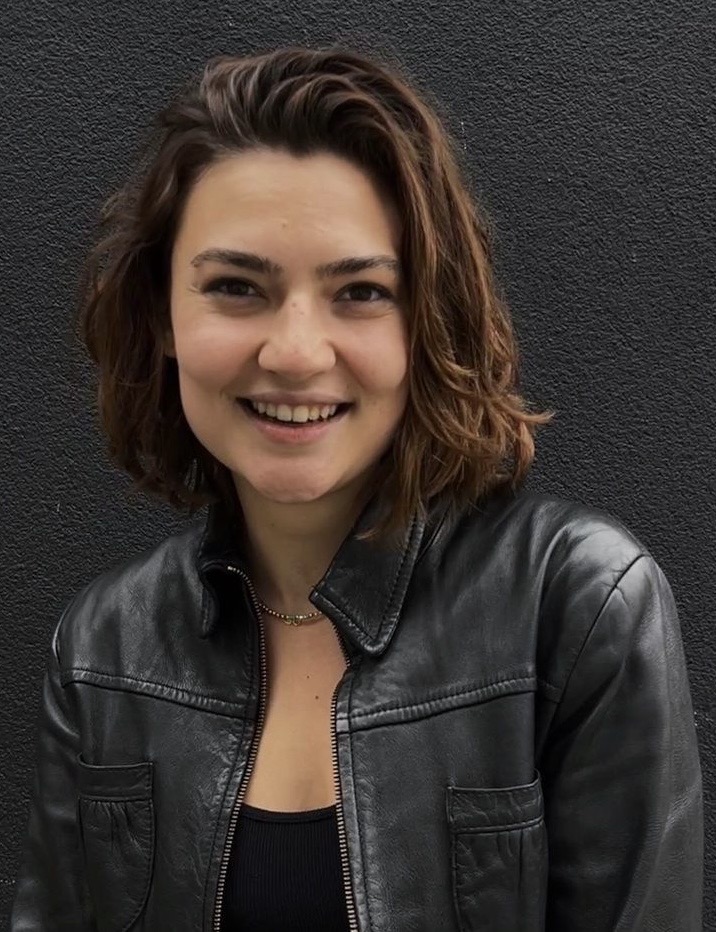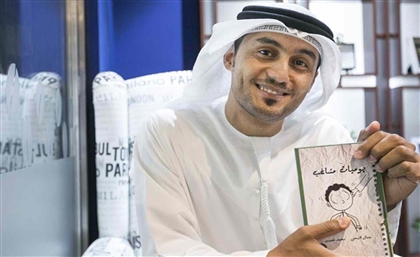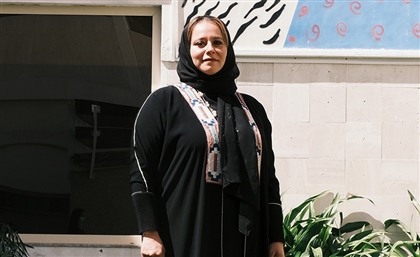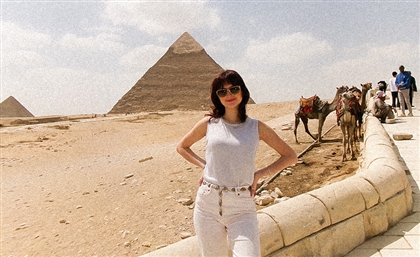Dahshur Residency Launches Creative Talent Market for Filmmakers
The Dahshur Residency launches the Creative Talent Market, a four-year program for emerging filmmakers combining training, mentorship, and internships to create tangible pathways into the industry.
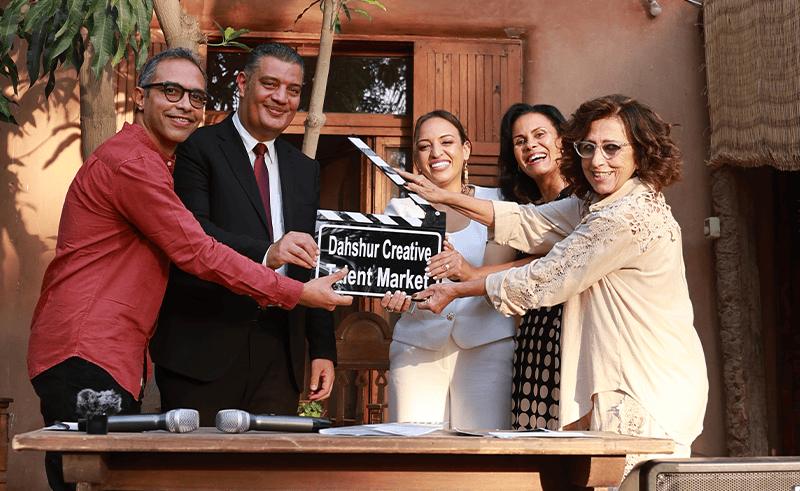
Cairo’s city chaos thins out with every mile on the road to Dahshur. For over an hour, the concrete fades into open desert, until a line of palms appears like a mirage, revealing a sunlit villa framed by the silhouettes of the Dahshur pyramids.
This is the Dahshur Residency: founded by filmmaker and producer Marianne Khoury in 2012, it has already hosted a series of workshops and residencies for over 500 filmmakers, shaping Egypt’s cinematic landscape.
The residency is opening a new chapter with the launch of the Creative Talent Market, an initiative led by the Youssef Chahine Foundation with support from the DROSOS Foundation. For the next four years, the program is designed to empower 200 aspiring filmmakers and media enthusiasts, blending hands-on training, mentorship, and industry networking to create tangible pathways for employability.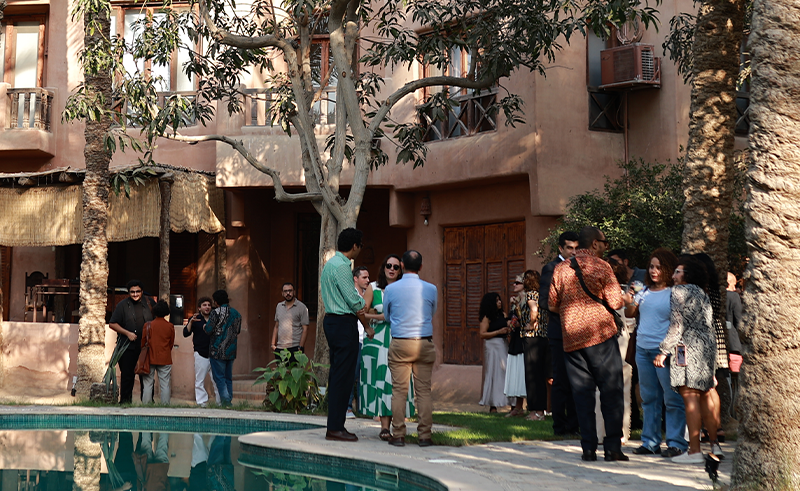 “When you choose to be a filmmaker, especially a documentary filmmaker, you can spend years working on your film but still have very little economic stability,” Marianne Khoury tells CairoScene. That is why the program culminates in the Creative Market: a showcase where, after a year of workshops, industry professionals connect directly with participants and their projects, turning training into opportunity. It’s an approach shaped by how quickly the industry itself is shifting.
Storytelling is no longer bound to cinema screens or streaming giants; today, it moves fluidly across formats and timelines, from ninety-second reels to feature films, carrying the same power to move audiences. By drawing in partners beyond the traditional screen industries, the Creative Talent Market widens the possibilities for where these stories can live, and with them, the job market for a new generation of filmmakers.
For Ahmed Nabil, Program Manager of the Dahshur Creative Talent Market and a long-time professor, the priority is creating a space of exchange. “Teaching is not about giving, but about exchanging.” Critical to this is also expanding who gets a seat in the classroom. For the program, they are looking for emerging or early mid-career filmmakers between the ages of 18–30, who mainly come from outside major cities like Cairo and Alexandria. “We want to target people who usually don’t have access to participate in these types of opportunities. We don’t want the same people here all the time,” Khoury shares.
To do so, the program will provide all accommodation and food for participants while they are in Dahshur. “All you need is to be able to come to Downtown Cairo and we’ll take care of the rest,” Nabil adds. For him, it is not only about creating a more equitable entry point into the industry, but about deeply enriching the creative ecosystem: “It’s critical to bring people from across the country, discovering how people think differently and in this way bringing new stories and ideas.”
The year-long program unfolds across five modules: short fiction, documentary, mini-series writing, social media content, and podcasting. Applicants select their preferred tracks, and from there, a panel of experts curates a cohort of 50, placing each participant in the module that best matches their background and ambitions. What follows is an immersive rhythm: a collective bootcamp in Downtown Cairo to spark community, then ten workshops across the year—including two residential gatherings in Dahshur, where small groups of ten work closely with one or two mentors. The scale is intimate by design, giving participants space to experiment, exchange, and grow, while the cohort as a whole becomes a network that stretches far beyond Dahshur.
In honour of Youssef Chahine’s centennial, participants will open the archives and study his films, a rare chance to learn from one of Egyptian cinema’s greats. At the same time, the residency equips them with the tools needed to navigate the changing technological landscape of the industry, including hands-on training in post-production facilities, from a Dolby Atmos 360 Sound Design Studio to a fully equipped editing suite and podcast studio.
What matters most is that even as the Dahshur Residency grows and embraces new tools, it remains deeply rooted in nature and community. The podcast studio, featuring industry-standard sound isolation, isn’t hidden away in a black box; instead, its windows open onto palms that soften the light. A professional screening room carries cream-colored walls, built carefully around a palm tree that the team refused to cut.
What began as a family home still holds that spirit. “It was just a garden once, full of mango and citrus trees,” Khoury recalls. “Piece by piece, we added to it, always with the feeling of being together but apart—each space independent, yet always connected by the garden, by the sun.” Even the meals reflect that rootedness: mahshi and date cake prepared and gathered from the garden. “The vision now is to carry this ethos further and become the first sustainable art residency in the Middle East, with the blueprint already in place,” Partnership Manager of the Creative Talent Market, Doaa Saber, explains to CairoScene.
At the launch, the audience itself reflected these layers of Dahshur. Among them were the current members of the ongoing program Les Ateliers de Dachouria, gathered for their final workshop where they would edit the films they had been developing over the year. Alongside them also sat past participants—those who had completed two workshops and returned, this time as mentors or even as students once again, continuing the cycle of learning and exchange.
“One student told me today that we feel at home—they have their own rooms, they know where they’ll be staying. That’s how I know we’ve succeeded,” Khoury reflects.
As I wrapped up my conversation with Khoury, filmmaker Yassr Naeim joined in and shared his memories. One of the very first participants in Dahshur’s earliest workshop, he spoke of the conversations that carried late into the night and the creative shifts that felt transformative. Returning once more to this creative refuge, he was struck by how much the residency has grown while still holding onto this spirit.
Surrounded by the Dahshur pyramids—once a testing ground for the monuments that later rose in Cairo—the residency echoes that history. With its communal spirit, it feels like a place where emerging voices can try, stumble, and grow into the artists who will shape what comes next.
“When you choose to be a filmmaker, especially a documentary filmmaker, you can spend years working on your film but still have very little economic stability,” Marianne Khoury tells CairoScene. That is why the program culminates in the Creative Market: a showcase where, after a year of workshops, industry professionals connect directly with participants and their projects, turning training into opportunity. It’s an approach shaped by how quickly the industry itself is shifting.
Storytelling is no longer bound to cinema screens or streaming giants; today, it moves fluidly across formats and timelines, from ninety-second reels to feature films, carrying the same power to move audiences. By drawing in partners beyond the traditional screen industries, the Creative Talent Market widens the possibilities for where these stories can live, and with them, the job market for a new generation of filmmakers.
For Ahmed Nabil, Program Manager of the Dahshur Creative Talent Market and a long-time professor, the priority is creating a space of exchange. “Teaching is not about giving, but about exchanging.” Critical to this is also expanding who gets a seat in the classroom. For the program, they are looking for emerging or early mid-career filmmakers between the ages of 18–30, who mainly come from outside major cities like Cairo and Alexandria. “We want to target people who usually don’t have access to participate in these types of opportunities. We don’t want the same people here all the time,” Khoury shares.
To do so, the program will provide all accommodation and food for participants while they are in Dahshur. “All you need is to be able to come to Downtown Cairo and we’ll take care of the rest,” Nabil adds. For him, it is not only about creating a more equitable entry point into the industry, but about deeply enriching the creative ecosystem: “It’s critical to bring people from across the country, discovering how people think differently and in this way bringing new stories and ideas.”
The year-long program unfolds across five modules: short fiction, documentary, mini-series writing, social media content, and podcasting. Applicants select their preferred tracks, and from there, a panel of experts curates a cohort of 50, placing each participant in the module that best matches their background and ambitions. What follows is an immersive rhythm: a collective bootcamp in Downtown Cairo to spark community, then ten workshops across the year—including two residential gatherings in Dahshur, where small groups of ten work closely with one or two mentors. The scale is intimate by design, giving participants space to experiment, exchange, and grow, while the cohort as a whole becomes a network that stretches far beyond Dahshur.
In honour of Youssef Chahine’s centennial, participants will open the archives and study his films, a rare chance to learn from one of Egyptian cinema’s greats. At the same time, the residency equips them with the tools needed to navigate the changing technological landscape of the industry, including hands-on training in post-production facilities, from a Dolby Atmos 360 Sound Design Studio to a fully equipped editing suite and podcast studio.
What matters most is that even as the Dahshur Residency grows and embraces new tools, it remains deeply rooted in nature and community. The podcast studio, featuring industry-standard sound isolation, isn’t hidden away in a black box; instead, its windows open onto palms that soften the light. A professional screening room carries cream-colored walls, built carefully around a palm tree that the team refused to cut.
What began as a family home still holds that spirit. “It was just a garden once, full of mango and citrus trees,” Khoury recalls. “Piece by piece, we added to it, always with the feeling of being together but apart—each space independent, yet always connected by the garden, by the sun.” Even the meals reflect that rootedness: mahshi and date cake prepared and gathered from the garden. “The vision now is to carry this ethos further and become the first sustainable art residency in the Middle East, with the blueprint already in place,” Partnership Manager of the Creative Talent Market, Doaa Saber, explains to CairoScene.
At the launch, the audience itself reflected these layers of Dahshur. Among them were the current members of the ongoing program Les Ateliers de Dachouria, gathered for their final workshop where they would edit the films they had been developing over the year. Alongside them also sat past participants—those who had completed two workshops and returned, this time as mentors or even as students once again, continuing the cycle of learning and exchange.
“One student told me today that we feel at home—they have their own rooms, they know where they’ll be staying. That’s how I know we’ve succeeded,” Khoury reflects.
As I wrapped up my conversation with Khoury, filmmaker Yassr Naeim joined in and shared his memories. One of the very first participants in Dahshur’s earliest workshop, he spoke of the conversations that carried late into the night and the creative shifts that felt transformative. Returning once more to this creative refuge, he was struck by how much the residency has grown while still holding onto this spirit.
Surrounded by the Dahshur pyramids—once a testing ground for the monuments that later rose in Cairo—the residency echoes that history. With its communal spirit, it feels like a place where emerging voices can try, stumble, and grow into the artists who will shape what comes next.
Trending This Week
-
Dec 27, 2025







